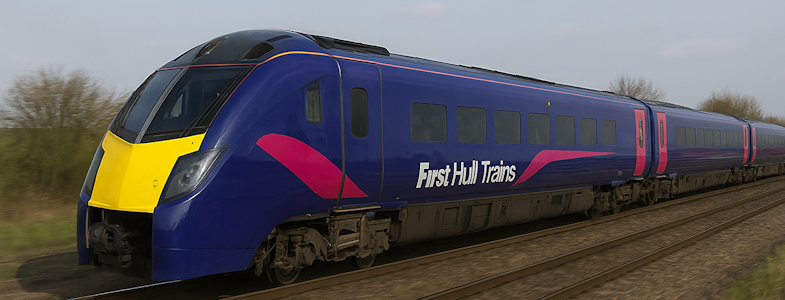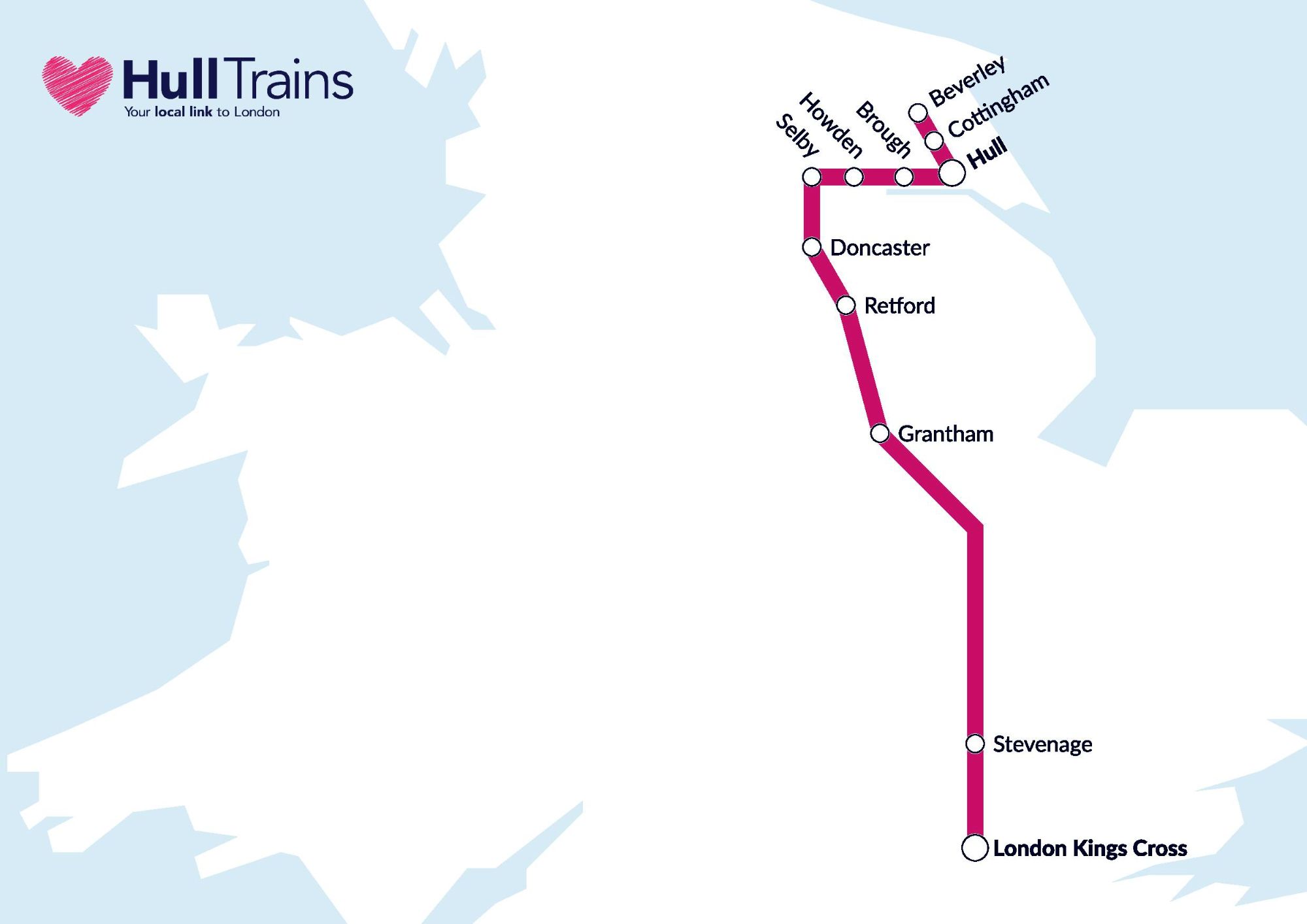
Overview
Following its rebrand under FirstGroup in 2008, First Hull Trains cemented its reputation as a leading open-access operator, providing direct services between Hull and London King’s Cross. With its distinctive blue and pink livery, the company was positioned as a customer-focused alternative to franchised operators on the East Coast Main Line. Over the next decade, Hull Trains continued to refine its offering, later introducing a brand-new fleet of modern trains under the Paragon name, which marked a major leap forward in quality and reliability.
History
After the adoption of the FirstGroup identity in 2008, Hull Trains entered a period of expansion and brand strengthening. Initially operating Class 180 Adelantes, the operator faced challenges with reliability but nonetheless grew steadily, maintaining its reputation as an important link between East Yorkshire and London. Recognising the need for more dependable and passenger-friendly rolling stock, Hull Trains introduced the new Paragon fleet in late 2019. This investment marked a turning point, giving the operator a modern and efficient base to build upon.
Network & Routes
Hull Trains’ network remained focused on connecting Hull with London King’s Cross via the East Coast Main Line.
Highlights included:
Up to seven daily services in each direction at its peak.
Stops at Doncaster, Selby, Brough, and other key stations in Yorkshire.
Journey times of around two and a half hours, making it competitive against road and other rail options.
Direct services that avoided the need for connections, giving passengers greater convenience.
Fleet & Onboard Facilities
From 2008, Hull Trains relied on the Class 180 Adelantes, which, while offering speed and capacity, were prone to technical problems. The breakthrough came with the introduction of the Paragon fleet of Class 802 bi-mode trains in 2019. These modern units provided improved reliability, lower emissions, and faster acceleration. Onboard facilities included Standard and First Class seating, Wi-Fi, power sockets, air conditioning, and at-seat catering services. The Paragon trains represented a huge improvement in comfort, reliability, and environmental performance, reinforcing Hull Trains’ status as a high-quality operator.
Travel Information
First Hull Trains positioned itself as an accessible and value-driven operator. It offered Advance, Off-Peak, and Anytime fares, often priced competitively compared to franchised operators on the same corridor. Its flexible approach meant that passengers could access cheaper deals while still benefiting from a high standard of service. First Class offered a premium travel experience with spacious seating, complimentary food and drink, and a quieter atmosphere. The Paragon trains further enhanced the travel experience, creating a more consistent and comfortable journey.
Performance & Reputation
Despite operational challenges during the Class 180 era, Hull Trains consistently achieved high passenger satisfaction ratings. The rebrand in 2008 gave the company a clear identity, while the 2019 introduction of the Paragon fleet marked a new chapter, allowing Hull Trains to operate with improved reliability and passenger confidence. The operator was frequently praised for its direct services, customer service, and its crucial role in keeping Hull connected to the capital.
Did You Know?
The Paragon fleet takes its name from Hull’s Paragon Interchange station.
Hull Trains was one of the first open-access operators to fully renew its fleet with brand-new bi-mode trains.
Despite being a relatively small operator, it often outperformed franchised rivals in customer satisfaction surveys.
First Hull Trains Archived Timetables
All files listed below are in compressed format and will need to be unpacked with an archiving program, we recommend 7-Zip which is completely free and can be downloaded from here.
First Hull Trains Network Map
Related Searches
First Hull Trains Delay Repay
First Hull Trains are part of the national Delay Repay scheme and offer compensation when your journey is...
First Hull Trains HST
During 2019 when Class 180 unreliability was causing issues, First Hull Trains hired in an HST set from sister...
First Hull Trains First Class
First Class accommodation on First Hull Trains services offers seats with greater legroom and an enhanced...
First Hull Trains Food & Drink
Food and drink is available in both classes of travel on First Hull Trains with a range of sandwiches and snacks...
First Hull Trains Lost Property
First Hull Trains take advantage of the MissingX service where you can claim or register a lost item. Instructions...
First Hull Trains Bikes
Bikes are welcome on First Hull Trains services but there is limited space and availability. Reservations must be....
First Hull Trains Luggage
The new Paragon fleet has been designed with luggage in mind. Despite this, First Hull Trains request that you...
First Hull Trains Menu
First Hull Trains offer a limited menu on board their trains with options for breakfast and a rest of the day...



